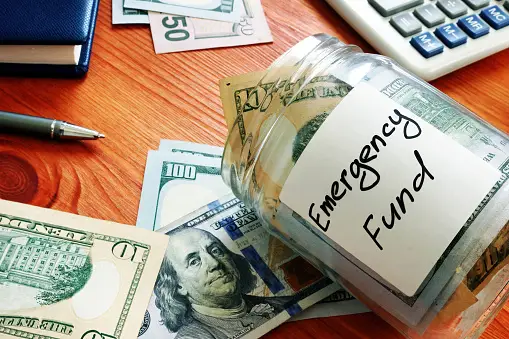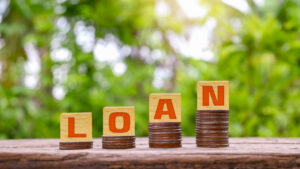Building and Managing an Emergency Fund: Financial Peace of Mind
Financial stability and peace of mind are built on a foundation of preparedness. One of the key elements of this foundation is an emergency fund. An emergency fund is a financial safety net that provides you with the peace of mind and security to handle unexpected expenses and life’s uncertainties. In this comprehensive guide, we’ll explore the importance of having an emergency fund, how to build one, and the best practices for managing it to ensure your financial peace of mind.
The Significance of an Emergency Fund
An emergency fund is your financial cushion, a reservoir of funds specifically designated for unforeseen expenses or emergencies. Here’s why it’s essential:
- Financial Security: An emergency fund provides financial security when unexpected situations arise, such as medical bills, car repairs, or job loss.
- Debt Avoidance: It helps you avoid accumulating high-interest debt when you’re faced with unplanned expenses, preventing a financial setback.
- Stress Reduction: Knowing you have a financial safety net reduces stress and anxiety, contributing to your overall well-being.
- Budget Maintenance: An emergency fund enables you to stay on track with your budget even when life throws you a curveball.
- Investment Continuity: It allows you to keep your long-term investments, like retirement accounts, intact during emergencies.
Building Your Emergency Fund
Building an emergency fund is a step-by-step process that can be tailored to your financial situation and goals. Here’s how to get started:
1. Determine Your Target
The first step is to establish your target amount. A commonly recommended goal is to save three to six months’ worth of living expenses. However, your specific circumstances may dictate a different amount. Consider factors such as your job stability, family size, and monthly obligations.
2. Open a Separate Account
Your emergency fund should be separate from your regular checking or savings account. Opening a dedicated account for this purpose helps prevent you from dipping into the fund for non-emergencies.
3. Set a Monthly Savings Goal
Determine how much you can comfortably set aside from your income each month and establish a savings goal. Even if it’s a small amount, consistent saving is the key to building a robust emergency fund.
4. Automate Your Savings
Set up automatic transfers from your main account to your emergency fund. Automation ensures that you consistently contribute to your fund without the temptation to skip saving.
5. Cut Unnecessary Expenses
Review your budget to identify non-essential expenses that you can cut. Redirect the money saved from these cutbacks into your emergency fund.
6. Use Windfalls Wisely
Utilize unexpected windfalls, such as tax refunds or bonuses, to bolster your emergency fund. Windfalls offer an excellent opportunity to accelerate your savings.
7. Avoid Lifestyle Inflation
When you receive a salary increase or financial windfall, resist the temptation to increase your spending. Instead, allocate the extra income to your emergency fund.
8. Side Hustles and Additional Income
Consider taking on a side hustle or freelance work to generate additional income. The extra money can be directed to your emergency fund.
Managing Your Emergency Fund
Once your emergency fund is established, it’s essential to manage it effectively to ensure it serves its purpose. Here are some best practices for managing your fund:
1. Don’t Use It for Non-Emergencies
Resist the temptation to use your emergency fund for non-urgent expenses. Keep a clear definition of what constitutes an emergency, such as unexpected medical bills, car repairs, or essential home repairs.
2. Replenish After Use
If you need to tap into your emergency fund for a genuine emergency, make it a priority to replenish the fund as soon as possible. This ensures that it’s ready for the next unforeseen situation.
3. Periodic Reviews
Regularly review your emergency fund to ensure it aligns with your current financial circumstances. Adjust your savings goal if your financial situation changes.
4. Consider High-Yield Savings Accounts
Consider moving your emergency fund to a high-yield savings account, which can offer better interest rates, enabling your fund to grow faster.
5. Stay Prepared for Economic Downturns
In challenging economic times, like a recession, bolster your emergency fund as a proactive measure against potential job loss or financial challenges.
6. Keep It Liquid
While you may earn less interest, it’s essential to keep your emergency fund in a liquid account, such as a regular savings account, to ensure immediate access to the funds when needed.
7. Avoid Overfunding
Avoid overfunding your emergency fund to the detriment of other financial goals. Once you’ve reached your target, focus on other priorities like retirement savings or debt reduction.
Conclusion
Building and managing an emergency fund is a crucial step towards financial peace of mind and security. Life is unpredictable, and having a dedicated fund for unexpected expenses allows you to navigate financial challenges without derailing your financial goals. Whether it’s a medical emergency, a sudden job loss, or a home repair, your emergency fund ensures that you’re financially prepared to handle life’s uncertainties with confidence and ease. Start building your emergency fund today and take a significant step toward securing your financial future.




